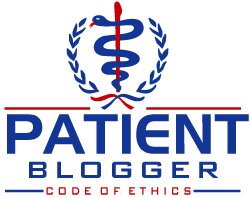Helping Infants Suffering From Pain
The Thinking's Changing About Whether Babies Feel Pain — And How To Treat It
NEW YORK, Feb. 21, 2008
Treating Pain In Tiny Patients
Premature babies are often born with painful medical problems. But doctors are now learning how to detect and treat pain in these tiny patients. Sanjay Gupta reports. |
In three short weeks of life, Josie Toland has undergone a lifetime's worth of medical procedures. She was born two months premature and developed serious lung problems, Gupta reports.
She's had tubes inserted to breathe and to eat, and constant sticks in her heels to draw blood.
"Babies have an average of 10-to-15 painful procedures per day in this unit if they're under 30 weeks gestation, or if they're really sick like Josie was," said Dr. Whit Hall.
Besides fighting for her survival, doctors have been wrestling with another issue: With everything that's been done to her, how much pain is Josie feeling?
As recently as 15 years ago, it was thought that newborns were not developed enough to feel or remember pain. Amazingly, newborns often received little or no anesthesia for most medical procedures - even surgery.
"The folklore became babies don't feel pain, anesthesia is bad for them, let's not give anything," said Dr. K.J.S. Anand.
Gupta said: "What you're describing must have been torture for these babies."
Anand is a leading researcher on how to detect pain in these tiny patients who can't speak and spend most of their time sleeping.
Doctors monitor some of the physical signs of pain, like blood pressure and heart rate, and the obvious behavioral signs like crying and facial expressions. But how do you know the difference between a cry of pain or a cry for hunger?
"You just can't stand over an infant 24-7 and watch them. And that's why I thought a machine system would be pretty good at handling some of these problems," said computer scientist Sheryl Brahnam.
Brahnam works with facial recognition technology to identify key spots in a baby's face that signal pain.
"It's wrong to think that every time a baby experiences pain, they'll cry. They're not. Sometimes all you see is a bulging forehead," Brahnam said.
She's working with facial recognition technology to identify key spots in a baby's face that signal pain. The hope is that one day a camera would constantly monitor the faces of newborns and alert doctors to even the subtle signs that something is wrong.
"It gives the infant a voice, it lets the infant cry out, 'I'm in pain,'" Brahnam said.
Detecting pain in newborns is one thing. Treating it is another.
Unfortunately, the drugs to treat babies' pain are meant for adults. Like morphine and methadone. Even today there is reluctance by doctors and parents to use them.
"Yes, I think there are still medical physicians, nurses, who hold out that babies probably don't feel pain," Anand said.
Some of the techniques to calm babies are tried and true: creating a quiet atmosphere with low lights and swaddling them for comfort.
It's all working for Josie.
"Can you say without a doubt, that Josie is not in pain right now?" Gupta asked Hall.
"I can. I'm basing that on she seems comfortable, she's not crying, she seems to be happy," Hall said.
Evidence that years later, children and adults remember the pain they suffered as babies. Studies show they're more pain sensitive and can have higher rates of ADD.
*****************
You can find the article, including photos and video, here
Thank you to Nancy for the link to this article.


7 comments:
"Evidence that years later, children and adults remember the pain they suffered as babies. Studies show they're more pain sensitive and can have higher rates of ADD."
I do want to point out though that both of the newscasters were clear in saying that they weren't sure whether this connection to ADD/ADHD was due to the pain they experienced or the high level of stimuli in the NICU.
Stacy and Nancy,
Here is a related video which is what I saw on the CBS news site.
http://www.cbsnews.com/sections/i_video/main500251.shtml?id=3861507n&channel=i_video
Helen Harrison
I would argue that hunger is a form of pain, discomfort is a form of pain. Shouldn't a baby's comfort be the paramount concern?
Of course, this assumes that babies feel pain.
Interesting segment. .the show did a pretty good job of discussing pain in infants, but I had the feeling that they were truly discussing pain among preemie infants who were at a higher gestation, not micropreemies. They talked about the infant's crying - the different types of crying, well, we all know that babies on vents are a whole different story.
And, 10-15 painful episodes per day? Multiply that by 3 months, that is approximately 1,125 painful procedures these kiddos endure prior to discharge during which time their brains are developing at a very rapid rate. . .During which time these kiddoes would have been bathed in amniotic fluid for protection. . .
I find it truly amazing that in 2008, this STILL has to be a topic of discussion.
I find it truly amazing that in 2008, this STILL has to be a topic of discussion.
Dear Terri,
Amen, amen, amen.... not only still a discussion, but still an unresolved issue in NICU's everywhere. The situation remains that everyday in the US fetal infants face unrelieved pain around the clock. Progress has been made in some centers - and that is great... but as long as we don't share a collective conscience about what is humane treatment, suffering will sadly continue.
sheila
I would very much like to recommend a Teaching Company course called "Understanding the Brain" taught by Dr. Jeannette Norden of Vanderbilt University.
The DVDs are currently on sale at the Teaching Company
www.TEACH12.com
These lectures give a good background for any preemie parent trying to understand normal brain development and function and what can go wrong in preemies (although I'm not sure preemies are mentioned specifically -- I'm about half-way through the course myself).
But so much of the course seems relevant to topics that come up in our discussions.
For example, I've just heard an interesting lecture on "agnosias" -- brain disorders which involve the loss of some specialized part of a person's ability to decipher informational input.
In a previous post to this blog, we heard from a preemie parent whose child has prosopagnosia, or the inability to decipher faces. My son has this too, as do several other preemies whose parents post to the Preemie-Child list.
Individuals with this disability (from temporal lobe lesions) can see perfectly well (usually)and can give a verbal description of faces of people they know, but they cannot identify even a well-known face if they see it in a group. The individual can see and describe the eyes, nose, and other features of a face but can't add them all up to form a recognizable identity. Individuals with prosopagnosia have to depend on clothing and other cues to determine whether someone is a man or a woman. They find it difficult to follow television programs or movies because they can't figure out who's who. These individuals also cannot identify animal faces; they cannot tell a dog from a giraffe, for example, without seeing the rest of the body. They may have trouble identifying themselves in the mirror or identifying people in photographs.
I once brought my son home a
t-shirt with horses on it. I asked him what was on the shirt and he guessed "geese?" He really has to memorize a picture involving faces of people or animals before he can identify it (and even body clues aren't enough for him, in many cases.)
Dr. Norden also had an excellent section on how the brain experiences pain which I think is highly relevant to this discussion.
Helen Harrison
My daughter Lilike was a full term infant undergoing daily heel sticks for 7 days to test her blood for infection and they all came back normal. I remember the nurses/neo doc etc all trying to egt an iv in her at 5 days old after a drip change was needed for more iv antibiotics and she screame so red faced and thrashed about thats why they wanted to try a scalp iv insertion. Saying it would hurt her less to put the iv needle in her scalp. That I could try thigh injections but that would hurt her more then a scalp iv. But when I came back for the shaven off hair they had already given her the thigh injections.
Post a Comment